
AirSkill for Fire Departments
We have worked with Fire Departments for many years to refine the way auto responders can train to use drones to make their jobs safer

Airskill is a leading VR/AR software company that has been developing innovative training solutions for drone pilots, working closely with fire departments across Europe and the United States over the past five years. By utilizing virtual and augmented reality technologies, Airskill provides fire departments with realistic, immersive training scenarios that help drone operators hone their skills in a safe and controlled environment. This advanced training is crucial as drones are increasingly becoming an essential tool for firefighters in their day-to-day operations.
In emergency situations, drones play a pivotal role in providing critical aerial views of dangerous environments, such as wildfires, building fires, and hazardous materials incidents. They allow fire departments to assess situations from above, identifying hotspots, monitoring fire spread, and searching for missing persons without putting firefighters at unnecessary risk. However, operating drones in these high-pressure environments requires precision and quick decision-making, which is why Airskill’s VR/AR training programs are invaluable.
Airskill’s partnership with fire departments ensures that its training programs are tailored to meet the specific needs of firefighting teams. The VR/AR simulations replicate the kinds of emergencies firefighters encounter, helping drone pilots practice skills like navigating through smoke-obscured environments, tracking fire progress, and assisting in search-and-rescue missions. These simulations allow drone operators to practice complex maneuvers and gain experience in situations that would be too dangerous or costly to replicate in real life.
With its state-of-the-art technology, Airskill continues to enhance the operational readiness of drone pilots in fire departments, helping to ensure that they can respond quickly and effectively to any emergency, ultimately contributing to safer communities and saving lives.
Scenarios we can manage for Fire departments out of the box
And we can always create custom scenarios. Just ask us below.
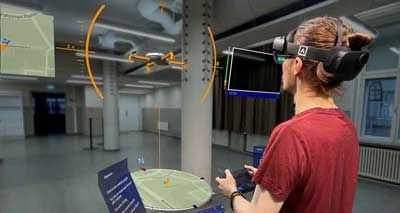
Basic flight manoeuvres for beginners
Simple simulation that allow you to learn the basics of flying a drone (panning right and left, climbing, landing, avoiding obstacles etc).
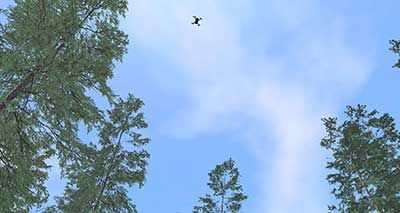
Emergency Procedures
In this scenario, law enforcement drone pilots will learn how to use drones in emergency situations. Practice deploying the drone to locate missing persons, assess hazardous areas, and monitor traffic incidents. Learn to navigate using the heads-up display to provide real-time situational awareness in crisis situations like search and rescue or crowd control.
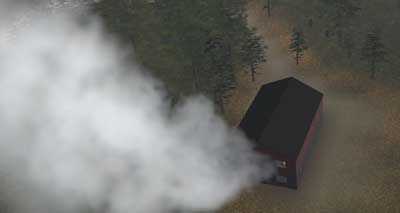
House Fire
This scenario trains firefighter drone pilots to assist in house fire emergencies. Use the drone to assess the scene, identify trapped individuals, and monitor fire spread from a safe distance. Practice guiding first responders by providing real-time aerial views, helping improve rescue coordination and safety.
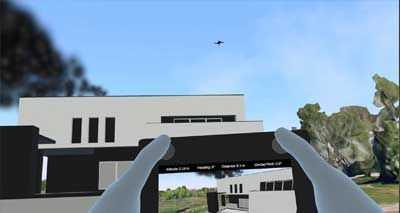
Industrial Building Fire
In this scenario, firefighter drone pilots will learn to deploy drones during an industrial building fire. Use the drone to assess fire intensity, locate hotspots, and identify structural risks. Practice using the heads-up display to guide firefighting efforts, monitor hazardous areas, and simulate ensuring the safety of on-ground personnel.

Oil Spill Fire Response
In this scenario, drone pilots will learn to assist in responding to an oil spill on water. Use the drone to assess the extent of the spill, track its movement, and monitor environmental impact. Practice using the heads-up display to guide cleanup crews, identify containment priorities, and ensure safe operations in affected areas.
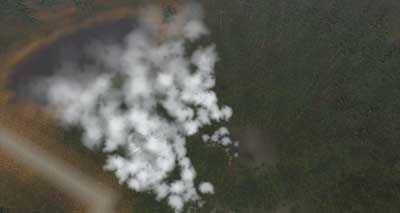
Wildfire response
This scenario trains firefighter drone pilots to respond to wildfire emergencies. Learn to use the drone to monitor fire spread, identify escape routes, and locate trapped individuals. Practice guiding firefighting teams by providing aerial views of the fire’s path, spotting dangerous hotspots, and assessing environmental conditions to improve response strategy and safety.

Dangerous Goods Traffic Accidents
This scenario trains law enforcement drone pilots to respond to traffic accidents involving hazardous materials. Use the drone to assess the scene from a safe distance, identify chemical spills or dangerous cargo, and monitor traffic flow. Practice coordinating with emergency teams by providing aerial views to guide containment efforts and ensure public safety in high-risk areas.